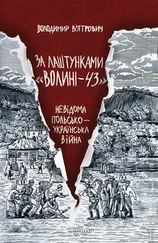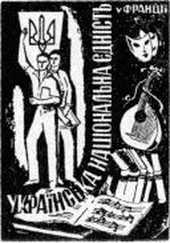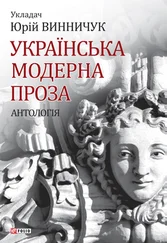With the approach of the Eastern Front in the middle of January 1945, the Division was ordered to move to Southern Steiermark and Slovenia, which was annexed to the German Reich. After a forced march through snow-covered secondary roads, the Division arrived at its destination towards the end of February, taking up positions on both sides of the former international boundary line between Austria and Yugoslavia. It was immediately ordered into battle against the Tito partisans. Its order were to secure this region and to complete its training. As in Slovakia, so in Slovenia, Ukrainians maintained the most cordial relations with the local population.
As the front again drew nearer, an order was received on the 20th of March to disarm the Division "temporarily." The disarming of the Division would have spelled a tragic ending for the Ukrainians, but this order as well as other senseless orders, i. e., to transform the Division into a paratroop division with a new Commander, were not carried out, mainly because the Red Army had broken through the front in the region of Gleichenberg-Feldbach. On the 31st of March 1945, the Division was put under the command of the Second Tank Army and ordered into the front lines along the Austro-Hungarian boundary, where it distinguished itself. A sector of this front was held by the Division until Germany capitulated.
During these battles at the front, towards the end of April, General Pavlo Shandruk arrived. He had just become the head of the Ukrainian National Committee, recognized by the German Government as the official representative of Ukrainians in Germany, and had been appointed the Commander of the Ukrainian National Army. His first act was to incorporate the Division into the Ukrainian National Army as, its First Ukrainian Division. The swearing-in ceremony was conducted and the soldiers of the Division swore loyalty to the Ukrainian nation. From this point, the soldiers of the Division wore the Ukrainian National emblem, the Trident, on their headgear.
In the following chapters, the author describes the last days of the existence of the Division: its negotiations with the British Army and retreat from the front across the mountains into a region agreed upon by the British. A small number surrendered to the American Army. Facing the internment, General Freitag ended his life by suicide, and the German officers [eft the Division.
In his concluding observations, the author summarizes the mistakes made by the German authorities in organization, training and committing the Division to combat. He brings out these points:
In accordance with the initial plans,, the Ukrainian Division should have been a foreign military unit, and not a German unit composed of Ukrainians. An utterly senseless policy regarding command posts in the Division had adverse effects on the Ukrainians for the whole period. The Ukrainian officers of the Division should have been appointed to the command posts and given a greater responsibility in tactical planning;
at least they should have been given an opportunity to receive staff training. It must be marginally noted that the Ukrainian officer and non-commissioned officer cadres fulfilled their assigned tasks and duties well.
The ordering of the Division in the front lines was a mistake; more heed should have been paid to the reports of the Staff of the Division about its specific characteristics and the unique traits, of character of the Ukrainian soldier. Despite this, the Division was thrown without adequate training and battle experience into a main enemy thrust where even battle-tried veteran German divisions succumbed. The High Command of Infantry and the Army Group "Northern Ukraine" ignored great political significance of the Division. The developments at the front in the sector east of Lviv could have been foreseen. The order to send the Division into battle resulted from a typically German way of thinking without taking into account its peculiarity. The sending of the Ukrainians to the most dangerous point at the front without providing them with experience in modern warfare, was doomed from the outset to failure.
This important military unit also lacked of good commander who should have been a talented and politically oriented soldier. Instead, it had the self-seeking, unpleasant and bureaucratic General Freitag.
Permission to use Ukrainian emblems, the Ukrainian anthem, and an oath of loyalty to Ukraine came too late. The creation of the Ukrainian National Committee and the Ukrainian National Army headed by General Pavlo Shandruk came even later, only two months before the end of the war.
UKRAINISCHE DIVISION "GALIZIEN"
GESCHICHTE DER AUFSTELLUNG UND DES EINSATZES UKRAINISCHE DIVISION "GALIZIEN".
Geschichte der Aufstellung und des Einsatzes (1943-1945).
MEMOIRS OF THE SHEVCHENKO SCIENTIFIC SOCIETY Vol. 188.
© 1970, by Brotherhood of Former Soldiers of the 1st Ukrainian Division UNA.
Kiev Printers Ltd., 860 Richmond St. W., Toronto 3, Ontario, Canada.
Das Buch "Die Geschichte der Ukrainischen Division" wurde von W. D. Heike, dem Chef des Stabes dieses Truppen-verbandes, verfasst. In ihm werden die Aufstellung und die Kampfeinsдtze des grцssten in sich geschlossenen ukrainischen Waffenverbandes, der im zweiten Weltkrieg auf deutscher Seite gekдmpft hat, militдrgeschichtlich behandelt. Es ist also eine militдrhistorische Abhandlung.
Die Initiative zur Bildung einer ukrainischen Division wurde im Jahre 1943 von Dr. Otto Wдchter gegeben, dem seinerzeitigen Gouverneur von Galizien, einer Provinz, die zum grossen Teil von westukrainischer Bevцlkerung bewohnt und in der Zeit von 1941 bis 1944 als Distrikt dem sogenannten Generalgouvernement eingegliedert war.
Die Absicht des Gouverneurs Dr. Wдchter war es, mit Hilfe dieser Division die Lцsung der ukrainischen Probleme in Deutschland zu forcieren und die ukrainische Bevцlkerung zur engeren Zusammenarbeit mit den Deutschen zu bewegen. Dr. Wдchter war der Auffassung, dass der Einsatz eines ukrainischen Waffenverbandes auf deutscher Seite im Kampf gegen den Kommunismus eine Revision der deutschen Politik gegenьber den Ukrainern bringen wьrde - und das besonders im Hinblick auf die Misserfolge der deutschen Wehrmacht an uer Ostfront. Er ging bei seinen Ьberlegungen davon aus, dass Fronterfolge dieses ukrainischen Waffenverbandes politisches Entgegenkommen gegenьber der Ukraine zur Folge haben mьsste.
Nach grossen Bemьhungen bei den seinerzeitigen hцchsten Reichsstellen, insbesondere bei dem Reichsfьrer der SS, Heinrich Himmler, gelang es dem Gouverneur, die Erlaubnis zu erhalten, Vorbereitungen zur Bildung einer Freiwilligen-Division unter dem Namen "Galizien" zu treffen. Hiermit war aber die Verpflichtung verbunden, dass mit der Aufstellung einer solchen Division kein Anspruch der Ukrainer auf Selbstдndigkeit erhoben werden darf. Die Worte "Ukraine" und "ukrainisch" waren verboten. Es sah also so aus, als ob die Soldaten dieser Division keine Ukrainer, sondern Galizier waren.
Die Initiative des Gouverneurs Dr. Wдchter wurde von der Mehrheit der ukrainischen Bevцlkerung im Generalgouvernement, insbesondere vom Professor Dr. W. Kubijowytsch, dem Vorsitzenden des ukrainischen Hauptausschusses, der einzigen in dieser Zeit legalen Institution, welche die ukrainischen Interessen im Generalgouvernement vertrat, befьrwortet und unterstьtzt. Die Proklamierung der Aufstellung der "Division Gali-zien" erfolgte am 28. April 1943. Zur gleichen Zeit wurde vom Professor Kubijowytsch ein Aufruf an die ukrainische Bevцlkerung des Generalgouvernements erlassen, sich freiwillig zur "Division Galizien" zu melden.
Die Freiwilligen Meldungen erfolgten in ьberaus grosser Zahl. Der Grund zu der positiven Einstellung zu dieser Division von der Mehrheit der ukrainischen Bevцlkerung des Generalgouvernements, insbesondere der Jugend und der ehemaligen Offiziere der ukrainischen Armee von 1918 bis 1921, hat mit Sicherheit darin gelegen, dass in dieser Division der Kern einer zukьnftigen ukrainischen Armee gesehen wurde, welche nach Beendigung des Krieges eine bedeutende Rolle beim Wiederaufbau des ukrainischen Staates spielen wьrde.
Читать дальше








